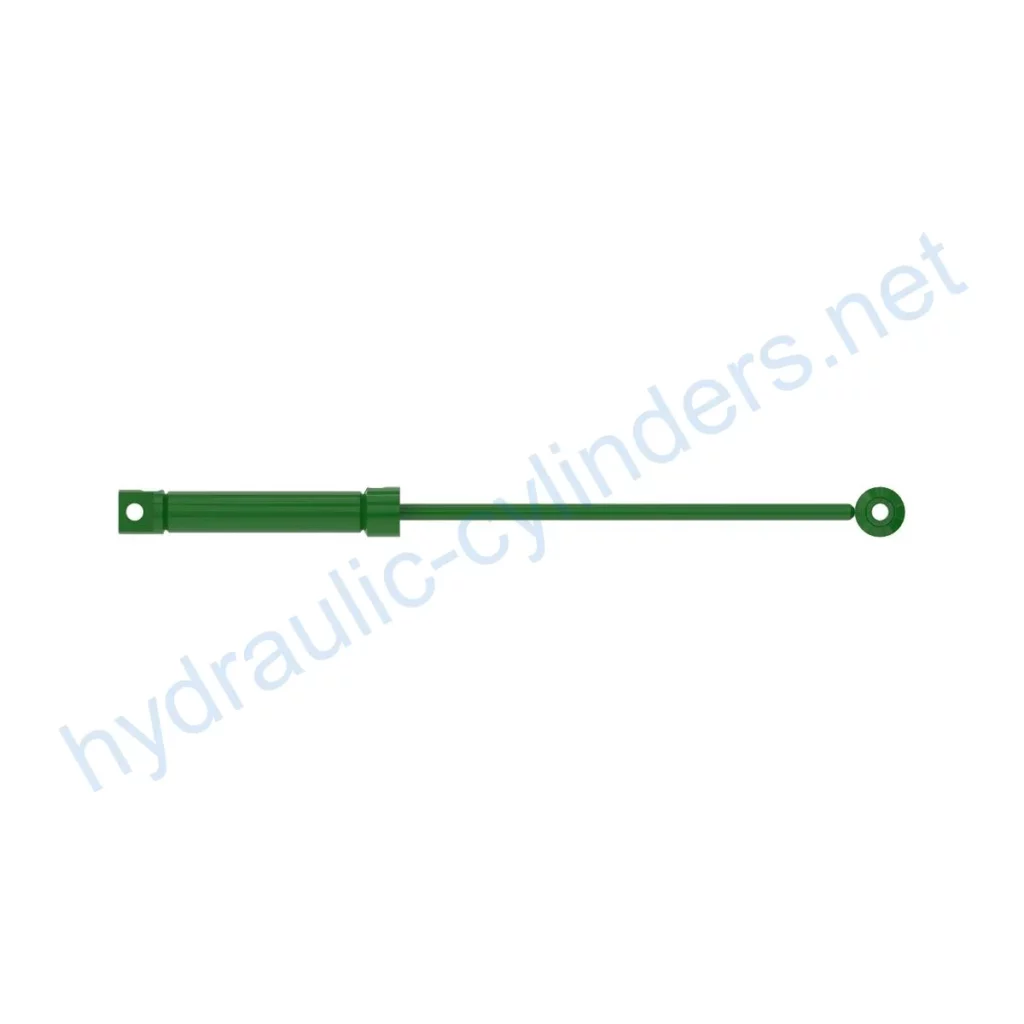Replacement Of TCA18638 Hydraulic Cylinder
This product is a hydraulic cylinder replacement for model 7200 and 7200A. It weighs 10.24 lb and has dimensions of 2.2 in (height), 2.3 in (width), and 31.2 in (length).
Product Introduction
The hydraulic cylinder is a crucial component in various applications. It functions to provide linear force and motion in a hydraulic system, allowing for the efficient operation of equipment.
Specifications and Model
Specifications:
- Weight: 10.24 lb
- Height: 2.2 in
- Width: 2.3 in
- Length: 31.2 in
Model: 7200, 7200A
Product Features
- Improved Equipment Performance: Replacing damaged or worn hydraulic cylinders can restore the normal operational capabilities of equipment, ensuring optimal performance in various applications.
- Enhanced Safety: Regularly replacing hydraulic cylinders can reduce safety hazards caused by cylinder failures, ensuring the safety of operators and equipment.
- Overload Protection: New cylinder designs often incorporate better overload protection mechanisms, enhancing overall safety.
- Quick Installation: Modern hydraulic cylinders are designed with ease of installation and replacement in mind, minimizing downtime.
- Standardized Components: Many hydraulic cylinders are standardized products, making it easier to obtain replacement parts in the market.
Applications
This hydraulic cylinder replacement finds application in various scenarios:
- Excavators: Hydraulic cylinders in excavator arms or buckets may require replacement due to long-term use or overloading, ensuring proper operation.
- Cranes: Hydraulic cylinders in crane boom arms are prone to wear from frequent lifting and lowering, necessitating regular replacement for safety purposes.
- Tractors: Hydraulic cylinders in front-end loader attachments of tractors may experience leakage or performance degradation during continuous lifting and tilting operations, requiring replacement.
- Harvesters: Hydraulic systems in harvesters endure high pressure during the harvesting process, causing cylinder fatigue. Timely replacement is essential to maintain work efficiency.
- Automated Production Lines: Hydraulic cylinders are used to control robotic arms and other automated equipment. Cylinder failures can adversely affect production efficiency, necessitating immediate replacement.
- Die Casting Machines: Hydraulic cylinders in die casting machines may experience performance degradation in high-pressure and high-temperature environments. Regular replacement ensures product quality.
- Mining Equipment: Hydraulic cylinders are used for lifting and moving heavy loads in mining equipment. Due to harsh working conditions, regular inspection and replacement are necessary to avoid equipment failure.
- Bulldozers: Hydraulic cylinder wear on bulldozer blade arms can lead to decreased pushing capacity, requiring timely replacement to maintain job efficiency.
Maintenance Tasks
Common maintenance tasks for hydraulic cylinders include:
- Regular Inspection: Periodically inspecting the cylinder for any signs of damage, misalignment, or leakage is crucial for identifying potential issues and ensuring optimal performance.
- Proper Lubrication: Adequate lubrication of the cylinder’s moving parts is essential for reducing friction and extending its lifespan. Regularly apply an appropriate hydraulic oil for lubrication.
- Seal Replacement: Over time, seals in hydraulic cylinders may wear out or become damaged. Regularly replacing seals helps maintain proper sealing and prevents leakage.
- Calibration Check: Ensuring the cylinder’s calibration matches the equipment’s requirements is necessary for accurate operation. Regularly check and adjust the calibration as needed.
Safety Considerations and Environmental Factors
When handling hydraulic cylinders, it is important to prioritize safety measures to prevent accidents and injuries. Additionally, considering the environmental impact of hydraulic cylinders is crucial for sustainable practices.
Troubleshooting and Common Issues
Here are some common troubleshooting points and issues related to hydraulic cylinders:
- Lack of Power: If the hydraulic cylinder fails to provide sufficient force, check for potential issues such as low hydraulic pressure, damaged seals, or internal leaks.
- Leakage: Hydraulic cylinder leakage can be caused by worn-out seals, damaged piston rods, or loose fittings. Identify the source of the leak and replace the necessary components.
- Slow Cylinder Movement: Slow or sluggish cylinder movement may indicate insufficient lubrication, improper hydraulic fluid, or internal blockages. Check and address these potential causes.
- Abnormal Noises: Unusual noises coming from the hydraulic cylinder can indicate air in the system, loose components, or internal damage. Inspect and troubleshoot accordingly.
- Erratic Cylinder Operation: If the cylinder behaves inconsistently or erratically, it may be due to issues such as air in the system, contamination, or misaligned components. Identify and rectify these problems.
Preventive Measures
To minimize potential issues and optimize the performance of hydraulic cylinders, implement the following preventive measures:
- Regularly inspect and maintain the cylinder to identify any signs of wear, misalignment, or damage.
- Ensure proper lubrication of the cylinder’s components to reduce friction and prevent premature wear.
- Follow correct installation procedures, providing guidance on aligning the cylinder accurately. Recommend using appropriate installation brackets to secure the cylinder.
- Provide recommended inspection, repair, and replacement procedures to ensure effective cylinder maintenance.
- Offer replacement parts and rebuilding services to extend the lifespan of hydraulic cylinders.
- Suggest techniques to enhance the durability of hydraulic cylinders, maximizing their lifespan.
Product Design Considerations and Selection Criteria
When selecting hydraulic cylinders, various design considerations are essential:
- Load-bearing Capacity: Hydraulic cylinders should be capable of handling the intended loads within the specified range.
- Sealing Performance: Effective seals, such as piston seals and rod seals made from durable materials like polyurethane or nitrile rubber, are crucial for preventing leakage.
- Durability: The cylinder body and threaded ends should undergo meticulous surface treatment to enhance wear resistance.
- Safety: Design features that prioritize safety, such as overload protection mechanisms, should be considered.
- Maintainability: Easy access to components and provisions for proper lubrication and adjustment contribute to ease of maintenance.
Sealing and Lubrication
Hydraulic cylinders employ various sealing components to ensure their proper functioning:
- Piston Seals: High-quality piston seals are crucial for maintaining a proper seal between the piston and cylinder walls.
- Rod Seals: Rod seals prevent fluid leakage along the piston rod.
<

